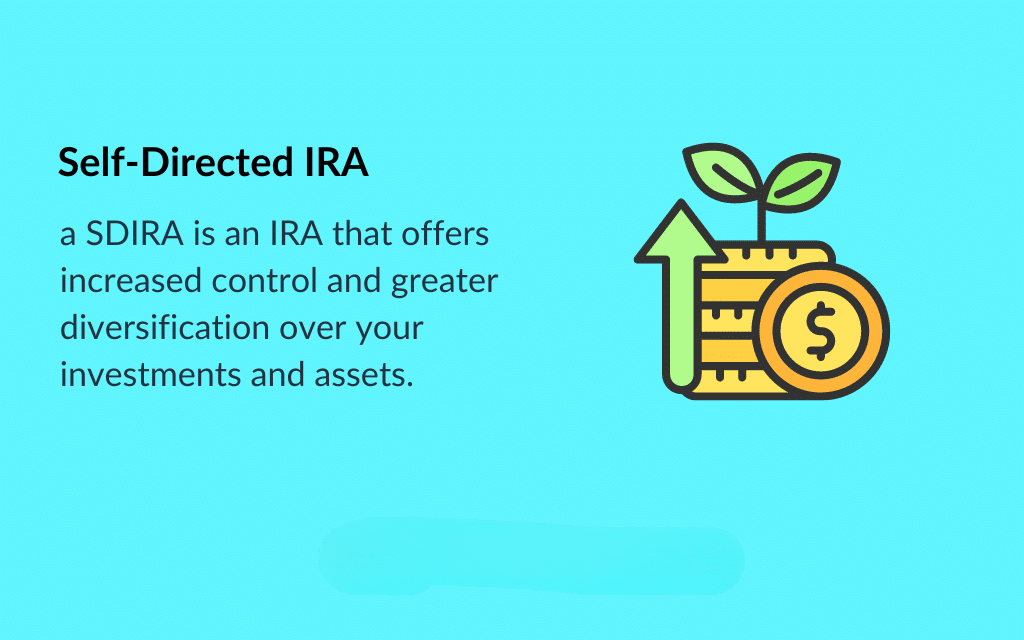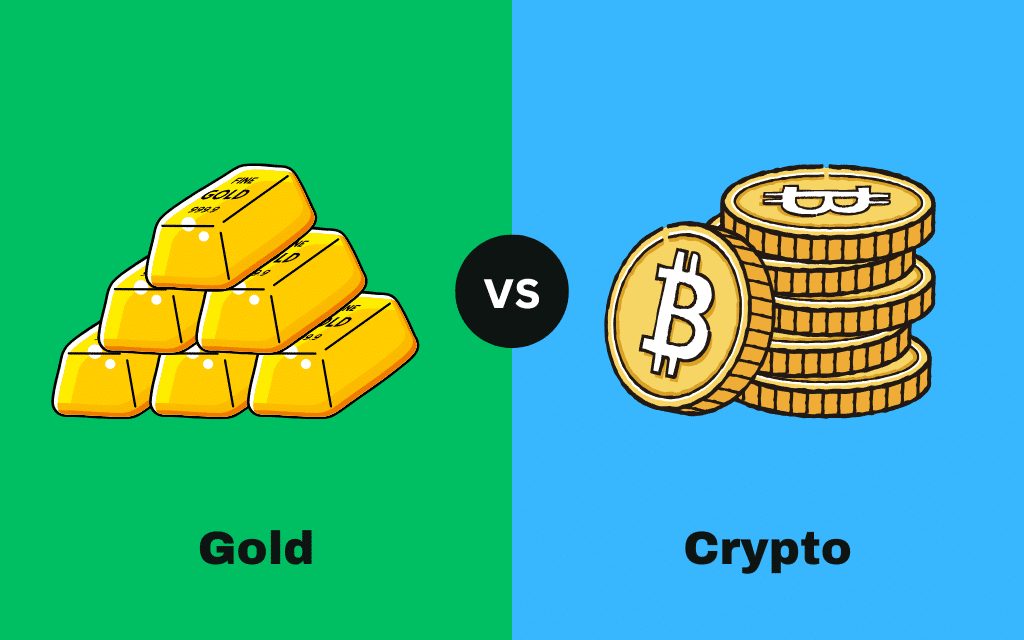Key Takeaways
- A self-directed IRA allows you to invest in alternative assets like real estate, private equity, crypto, and precious metals.
- Account holders—not custodians—are responsible for researching and managing all investment decisions.
- IRS rules prohibit self-dealing and transactions with disqualified persons, which can trigger taxes and penalties.
- Self-directed IRAs offer flexibility, but come with higher fees, complex rules, and potential liquidity issues.
What if you could invest in property, precious metals, or a startup with your retirement savings? Enter the self-directed IRA (SDIRA), a tool that grants you unique investment opportunities beyond traditional IRAs.
One of the potential benefits of a self-directed IRA is greater control over your retirement portfolio, increased diversification, and access to alternative investments.
Read on as we explain their rules, the wide array of investment options available, and how to choose a custodian for your needs.
What is a self-directed IRA?

A self-directed IRA is a type of individual retirement account that offers greater flexibility and control over your investment choices.
Unlike standard IRAs, where you can only invest in stocks, mutual funds, and bonds, a self-directed IRA offers the same tax benefits yet allows you to invest in just about anything.
This includes real estate, precious metals, private companies, IRA LLCs, as well as alternative assets like gold or cryptocurrency.
Self-directed IRAs are available in different account types, such as traditional, Roth IRA, and SEP IRA, each with specific eligibility requirements, benefits, and funding options.
Self-Directed IRA Rules
As a self-directed investor, you are the account holder and are responsible for making all the decisions and investment choices for your IRA, as well as ensuring compliance with all regulations.
Account holders must also be aware of withdrawal rules, including when and how funds can be accessed, to avoid penalties and ensure proper management of their SDIRA.
But with such great power comes an even greater responsibility of understanding and complying with the following SDIRA rules:
Be aware of taxes
Taxes are a core consideration when dealing with self-directed IRAs. For instance, unrelated business income tax (UBIT) applies if your IRA earns active income from real estate developments or active businesses.
Certain transactions, such as Roth conversions or early withdrawals, may be taxed as ordinary income.
Traditional self-directed IRAs offer tax-deductible contributions and tax-deferred growth, while Roth self-directed IRAs grow tax-free because contributions are made with after-tax dollars.
No self-dealing (indirect benefits)
Avoid transactions that benefit you or disqualified persons from your IRA investments. Using IRA assets for personal use, such as living in a property your IRA owns, can lead to penalties.
Avoid prohibited transactions
You can’t engage in transactions with disqualified persons, which include the account owner, their spouse, descendants, ascendants, and entities where you own 50% or more.
Submit fair market valuation (FMV)
If you hold real estate or other assets in your SDIRA, you’ll need to submit annual reports on their fair market value. The FMV report updates the IRS on any changes in your account’s worth.
Due diligence is your friend
It goes without saying: always investigate alternative investments thoroughly before committing your retirement funds.
Proper due diligence includes researching the investment, understanding associated risks, and consulting with legal, tax professionals, and a financial advisor for investment guidance.
Remember, if you violate any of the above mentioned IRA rules, your SDIRA will lose its qualified status. The IRS may impose a 15% penalty fee for the amount involved in the prohibited transaction, which you must pay within a specific timeframe.
In case you fail to meet the deadline, the IRS can add an extra tax of 100% of the transaction amount.
Many account holders benefit from working with financial advisors to help navigate complex investment decisions and ensure compliance with regulations.
SDIRA Investment Options
Most IRA custodians limit access to traditional investments. Although mutual funds, stocks, and bonds do generate passive income, they only scratch the surface of your IRA’s potential.
With a self directed account, you can access a much broader range of securities and alternative asset classes, such as real estate, private equity, and precious metals, allowing for greater diversification and the potential for higher returns.
Self directed investing means you choose and manage your own investments within your self directed account, giving you more flexibility and control.
Ditch the boring and invest in a way that excites you. Here’s a taste of what you can add to your portfolio:
- Self-directed Roth IRA: Think Roth IRA, but with turbocharged investment options. Pay taxes upfront and enjoy tax-free withdrawals in retirement, including your investment growth!
- Self-directed IRA real estate: Become a real estate mogul within your IRA! Invest in rental properties, land, or even flip houses for passive income and potential appreciation.
- Self-directed IRA LLC: It lets you invest in businesses or partnerships directly through your IRA. Some SDIRAs offer checkbook control, allowing you to write checks directly for investments, which provides even more flexibility.
- Self-directed gold IRA: Hedge against inflation with precious metals held securely within your SDIRA. Gold and silver are popular SDIRA investments that provide protection during economic uncertainty.
- Self-directed crypto IRA: Feeling adventurous? Invest in Bitcoin or other cryptocurrencies for high growth potential; however remember, it comes with extra risk!
- Self-directed SEP IRA: This option is for self-employed folks. It’s like a regular IRA with a bigger contribution limit so you can sock away more for retirement.
- Private equity: Fund promising startups and unlock high-growth potential for your retirement funds. Although private equity investments can offer substantial returns, they come with higher risks and less liquidity.
- Tax liens: Become a lender! Invest in tax liens and potentially earn interest on unpaid property taxes. There’s some complexity here, so tread carefully.
- Foreign assets: Expand your horizons and invest in international markets. They comprise stocks, bonds, or even real estate in another country.
- Promissory notes: Act like a bank! Invest in promissory notes and earn a return on loans made to individuals or businesses. Just make sure the borrower is reliable!
- Energy: Invest in oil, gas, or even renewable energy sources. Because this sector can be volatile, be sure you understand the risks involved.
You can start investing with relatively small amounts of money—large balances are not required.
Many investors begin with modest contributions and gradually build their portfolios as they learn more about self directed investing and alternative asset classes.
Expert’s Take
If you’re considering how to enhance your investment strategy, a self-directed IRA could be the way to go. One of the biggest advantages is the level of flexibility it offers.
Many investors want to branch out beyond conventional assets, and a self-directed IRA allows you to do just that. You can invest in real estate, buy into start-ups, or even acquire precious metals.
Prohibited Transactions in SDIRAs
Even though SDIRAs offer flexibility, the IRS restricts the following transactions to protect the retirement accounts’ integrity.
The Securities and Exchange Commission (SEC) provides guidance and warnings about prohibited transactions and potential fraud in SDIRAs, emphasizing the importance of independent verification and regulatory oversight.
The exchange commission also plays a role in overseeing investment transactions and ensuring security for account holders. Maintaining strong security is crucial to protect your SDIRA from prohibited transactions and fraud:
- Collectibles: Investing in items like antiques, artwork, or rare coins is strictly prohibited within your SDIRA. The IRS bans collectibles in SDIRAs because it’s hard to ensure fair pricing and prevent self-dealing.
- S Corporations: For context, an S corporation is a small business structure that pays taxes like a pass-through entity, meaning the profits or losses go directly to the shareholders’ tax returns. If your IRA holds the shares of an S corporation, it loses its tax-advantaged status.
- Life insurance: Life insurance policies cannot be part of your SDIRA portfolio. SDIRAs are for investments, and life insurance provides a death benefit. It makes such an investment more like personal financial protection that doesn’t fit within the IRA’s growth goals.
Pros & Cons of an SDIRA
SDIRAs offer numerous benefits, including the potential for higher returns and greater control over your retirement account, though there are also a few things to keep in mind.
Experienced investors are often best suited for SDIRAs due to the complexities involved. As an investor, you must understand the advantages and risks of SDIRAs to help you decide if they are suitable for your retirement strategy.
One key advantage is that SDIRA account holders are in the driver’s seat when it comes to investment decisions, allowing for more flexibility and a broader range of investment opportunities compared to regular IRAs.
However, while SDIRAs offer more investment options, they share similar rules and restrictions as regular IRAs, so it’s important to be aware of the regulatory framework and requirements.
Advantages
- Investment freedom: You can choose investments that align with your interests and expertise.
- Tax advantages: Enjoy tax-deferred growth or tax-free withdrawals depending on your SDIRA type (Traditional or Roth).
- Diversification power: Expand your retirement portfolio beyond traditional assets and hedge against market volatility.
- Legacy planning: Use SDIRAs to create a tax-advantaged legacy for your loved ones or chosen charities.
- A massive IRA ecosystem: Over $12 trillion is parked in IRAs across the country. That’s a mountain of cash just waiting to be put to work! SDIRAs unlock this potential by allowing you to invest these retirement funds in alternative assets to help boost your returns and diversify your nest egg.
Risks
- Extra fees: Custodians may charge additional fees for managing alternative assets in your SDIRA. For example, you might be charged annual storage fees for real estate or transaction fees specific to buying and selling certain investments.
- Compliance challenges: Unintentional rule violations can lead to costly penalties and disqualification. Breaches in SDIRAs can occur due to exceeding contribution limits, investing in prohibited assets like collectibles, or unknowingly engaging in self-dealing with IRA funds.
- Fraudulent schemes: Many investment scams target SDIRAs due to the broader range of investment options. Be cautious of SDIRA investment scams promising high returns in rare gems, undervalued startups, or non-existent real estate deals.
How to set up a self-directed IRA
Setting up an SDIRA involves several steps to ensure compliance and alignment with your investment goals.
- Find a reputable IRA custodian: Choose an IRA custodian experienced with self-directed accounts, as they can guide you through the setup process and ensure compliance with IRS regulations. Make sure to select a custodian that specializes in self-directed IRAs rather than a traditional IRA custodian.
- Understand their fee structure and investment options: Carefully review the custodian’s fee structure to understand all costs involved, and ensure their offerings align with your investment strategy.
- Open and fund your account: Complete the necessary paperwork and fund your SDIRA through contributions (subject to the annual contribution limit), rollovers, or transfers from other retirement accounts.
- Invest inside your new account: Start making investments and adhering to IRS rules and regulations.
Note: Custodians aren’t allowed to offer you investment advice. Therefore, conduct thorough research before investing and consult professionals for guidance as needed.
3 Best Self-Directed IRA Custodians
Choosing a reliable custodian is necessary for the effective management of your SDIRA.
Some custodians, such as IRA Financial, offer unique features like free audit protection and educational resources, making them a premium option for investors concerned about IRS audits and seeking comprehensive support.
Here are three reputable self-directed IRAs to jumpstart your search:
Equity Trust Company

Equity Trust Company offers numerous investment options and has extensive experience with self-directed IRAs. Their services include educational resources and personalized support.
The Entrust Group

The Entrust Group provides various investment opportunities and specializes in alternative assets. They offer comprehensive services and support for managing your SDIRA.
Madison Trust Company

Madison Trust Company focuses on providing flexible investment options and excellent customer service. They offer tools and resources to help you manage your SDIRA investments.
Are self-directed IRAs a good idea?
The decision to invest in an SDIRA depends on your comfort level, investment goals, and risk tolerance. Self-directed IRAs offer flexibility and control yet come with increased responsibilities and risks.
If you’re willing to do your research and manage the stringent rules, an SDIRA might be a great addition to your retirement strategy.
FAQs
What are the contribution limits for a self-directed IRA?
The contribution limits for self-directed IRAs are the same as traditional IRAs, currently $7,000 per year or $8,000 if you’re over 50.
Who offers self-directed IRAs?
Not all custodians offer SDIRAs. Look for custodians specializing in alternative asset IRAs like Equity Trust Company, The Entrust Group, and Madison Trust Company.
How does a self-directed IRA work?
An SDIRA works like a traditional or Roth IRA but has a wider range of investments managed by a custodian. You contribute funds to your SDIRA, and they grow tax-deferred or tax-free depending on the account type (Traditional or Roth).
Are there any tax advantages of having a self-directed IRA?
Yes. SDIRAs offer tax-deferred or tax-free growth, depending on whether you choose a traditional or Roth SDIRA.





